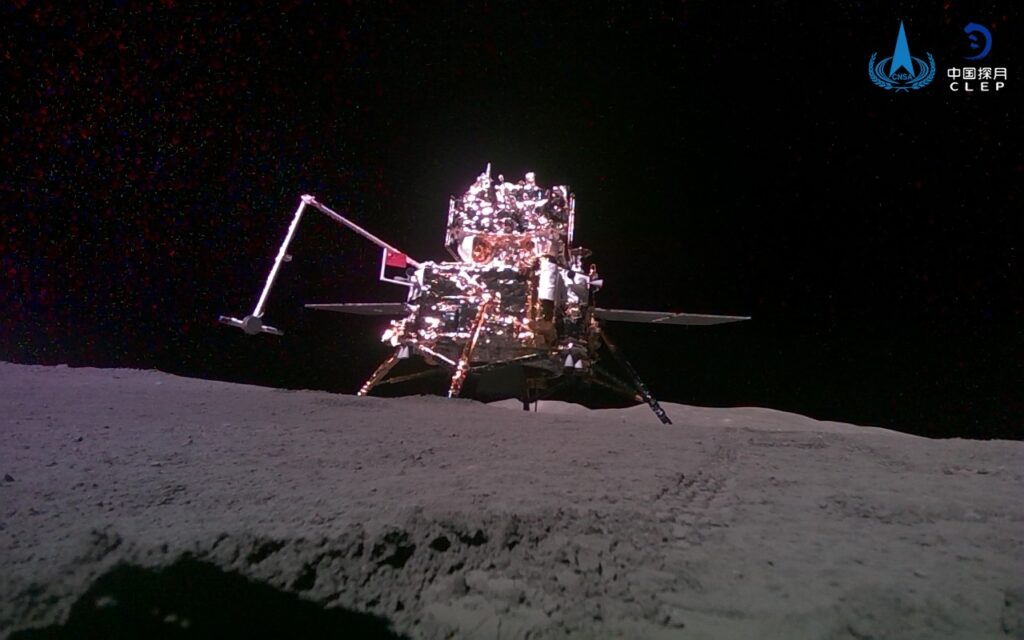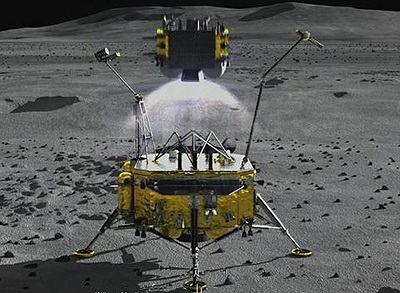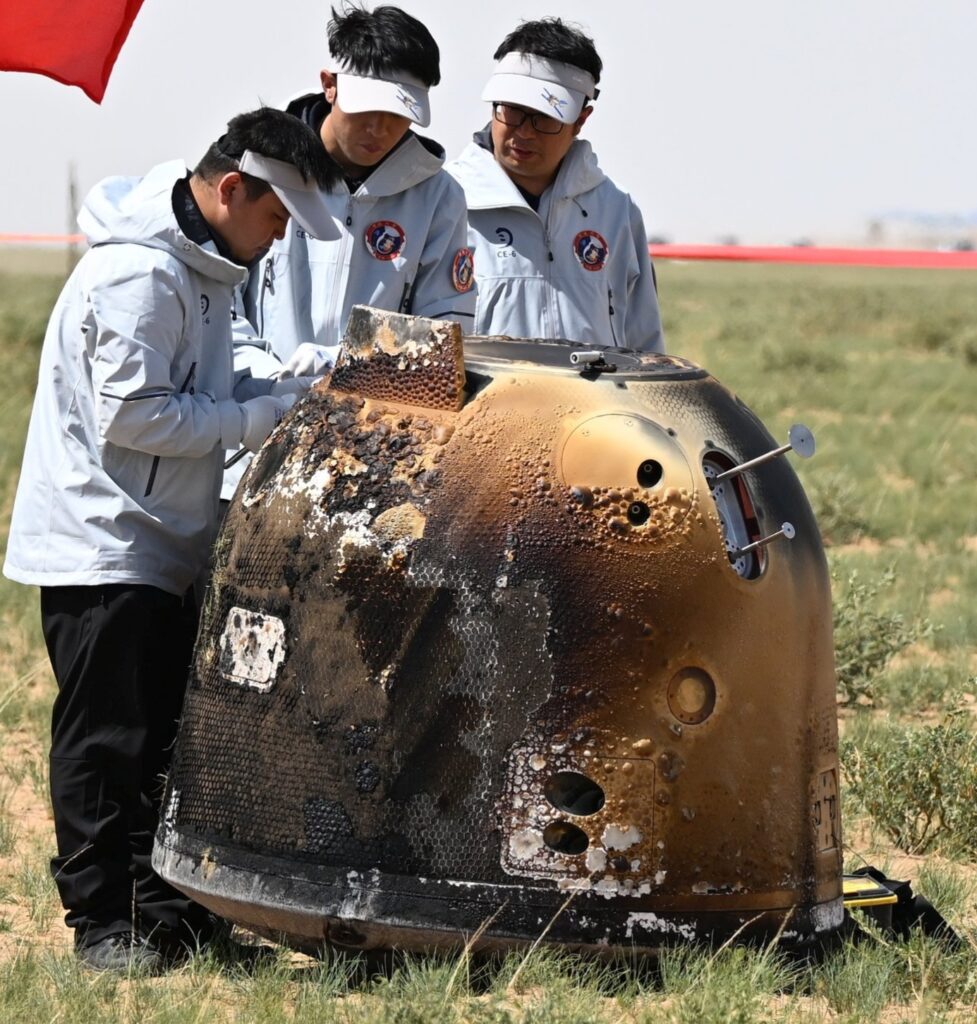The Chang’e 6 mission is under way. Its goal is to be the first to bring back a sample from the far side of the Moon. It uses backup hardware originally designed for the near side version of this mission, Chang’e 5, which flew in November 2020.
Ahead of the mission, a lunar data relay satellite, Quequao 2, was placed into a high lunar retrograde orbit, to support Chang’e 6 communications.
A large Long March 5 (CZ-5) rocket lifted off from the Wengchang launch site on Hainan Island in Far Eastern China at 0830 GMT on 3 May. It carried the 8.2 metric ton multi-module Chang’e 6 mission to the Moon via a burn to orbit and then a translunar injection burn.
After an uneventful passage to the Moon, the Chang’e-6 assembly made its braking burn using 3 kN thruster of the orbiter stage at 0212 GMT on 7 May and successfully entered lunar orbit at 8,600 x 200 km. The orbit was subsequently circularised and lowered.
A small 6.5 kg cubesat, built by Pakistan and dubbed ICUBE-Q (ICUBE-Qamar), was released into lunar orbit. This small orbiter carries two imaging optical cameras. A landing attempt via the 3.2 metric ton Chang’e 6 landing craft (with the ascent craft attached) will be made in early June at the Apollo crater of the South Pole-Aitken Basin (SPA), on the far side sector of the lunar South Pole.
A speeded up landing sequence is available here
Apart from a panoramic camera and a Chinese flag, the lander carries a ground penetrating radar system and a spectrometer to identify nearby minerals. The spacecraft also has some independent scientific instruments on board. These include:
- DORN (Detection of Outgassing RadoN), a French instrument to detect Radon outgassing from the lunar crust;
- NILS (Negative Ions at the Lunar Surface), a Swedish payload;
- a passive laser retro-reflector, an Italian device to take orbital measurements of the Moon; and
- a Chinese mini rover attached to the side of the lander, detected by western analysts.
After a 2 kg sample is taken, using a drill and scooping system, an ascent stage will carry it up to the Orbiter. The sample will be transferred into a specially created re-entry capsule to be returned to Earth.

The Chang’e 6 lunar lander and ascent module on the surface of the Moon as imaged by its mini-rover. Courtesy: CNSA
Update on 4 June 2024: Having undocked from the orbiter/service module, the Chang’e-6 lander/ascent craft (plus its attached mini-rover) landed on the lunar far side in the SPA Basin near the South Pole at 2223 GMT on 1 June 2024. On 3 June 2024, the Chang’e-6 Lander deployed the Chang’e 6 Lunar Mini-Rover (its mobile camera) to successfully image the lander on the surface. The main landing craft had been drilling and scooping samples from the surface. Having stored the lunar samples on the Chang’e 6 Lunar Ascent Module, at 2338 GMT on 3 June 2024, this was launched into a 180 x 15 km lunar orbit inclined at 43 degrees. This ascent craft will raise its orbit to dock with the Chang’e 6 service module/orbiter so that the lunar samples can be transferred to the sample return capsule ready for its return to Earth.

Artist’s impression showing Chang’e ascent module lifting off from lunar surface. Courtesy: CNSA
Update on 6 June 2024: Chang’e 6 ascent module docked with the Chang’e 6 Lunar service module/orbiter in lunar orbit at 0648 GMT on 6 June 2024. The Lunar sample container was transferred to the Chang’e 6 Lunar Sample Return capsule at 0724 GMT. The lunar orbiter/return capsule will stay in lunar orbit for 14 days before initiating a return to Earth.
Update on 25 June 2024: It is assumed that the Chang’e 6 ascent module was discarded on 8 June to deliberately crash onto the Moon. The Chang’e 6 service module/orbiter with the sample return capsule attached made a firing to escape lunar orbit at 1538 GMT on 20 June. Just before arriving at Earth, the sample return capsule was released. It re-entered Earth’s atmosphere at 11.2 km/s, and, via a skip trajectory, landed in the Siziwang Banner region of Inner Mongolia at 0607 GMT on 25 June 2024. Just over 1.9 kg of lunar soil was returned to Earth. The service module then made another firing to venture to a new undisclosed destination.

The recovery crew inspects Chang’e 6 sample return capsule. Courtesy: CNSA





